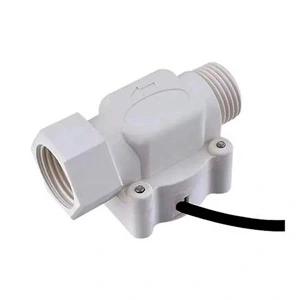Flow switches are essential components in many industrial and commercial systems, ensuring proper flow monitoring and process control. Two common materials for flow switches—plastic and stainless steel—offer distinct advantages and trade-offs. This blog explores their pros, cons, and ideal industry applications to help you make an informed choice.
Plastic flow switches are a popular choice for applications where cost and corrosion resistance are priorities. Their lower cost makes them attractive for budget-conscious projects, while their excellent resistance to many chemicals ensures reliability in environments like chemical plants and paper mills. These switches are lightweight, making them easy to install, and are well-suited for low-pressure systems where high accuracy is not critical. They excel in general process control and flow monitoring tasks.
However, plastic flow switches have limitations. They offer lower temperature and pressure resistance compared to stainless steel, making them unsuitable for high-pressure or harsh environments. Plastic can also creep at room temperature, requiring proper support, and may lose strength at higher temperatures, which can compromise performance in demanding applications.
For applications requiring durability and high-pressure capabilities, stainless steel flow switches are the go-to option. These switches can handle higher burst pressures, resist stress and shock, and perform reliably in high-temperature environments. Their robustness makes them ideal for harsh settings, such as saltwater exposure or industrial chemical processes, and they are widely used in the food and pharmaceutical industries due to their compliance with strict hygiene standards. Additionally, stainless steel switches maintain stable switching points over time, avoiding spring fatigue.
On the downside, stainless steel flow switches come with a higher cost than their plastic counterparts. While they are resistant to many corrosive substances, they may not perform as well as certain plastics against specific chemicals. Corrosion can also occur in environments with incompatible chemicals, requiring careful material selection.
The choice between plastic and stainless steel flow switches often comes down to the specific demands of the industry. Plastic flow switches are commonly used in general automation, low-pressure systems, and cost-sensitive applications like chemical plants and paper mills, where their corrosion resistance and affordability are key advantages. In contrast, stainless steel flow switches are preferred in high-pressure industrial systems, such as those in the oil and gas, automotive, and manufacturing sectors. Their durability and ability to withstand harsh environments make them indispensable in water treatment and food and pharmaceutical processing, where reliability and compliance are critical.
By understanding the strengths and limitations of each material, you can select the flow switch that best aligns with your application's requirements, balancing cost, performance, and environmental demands.
